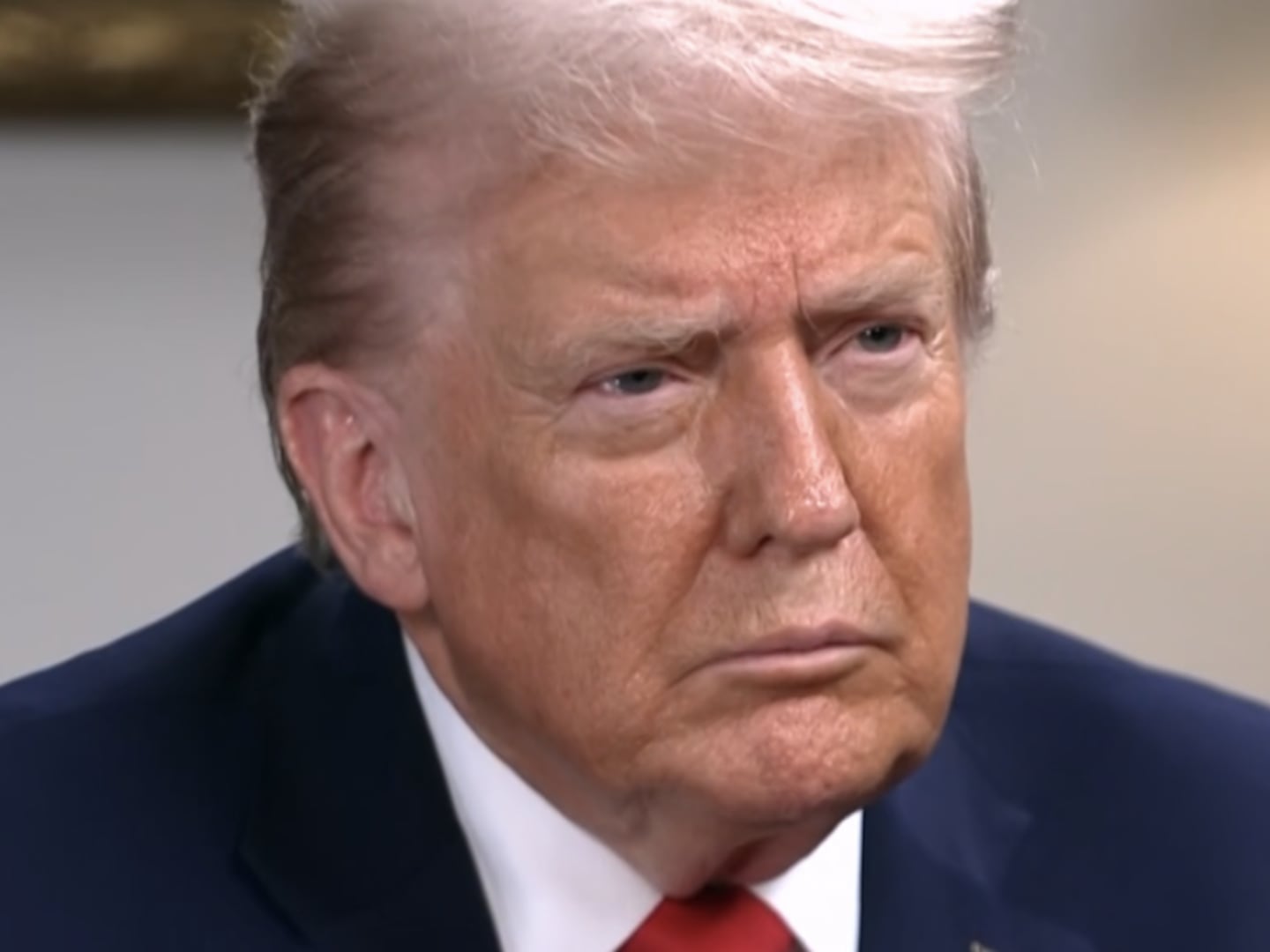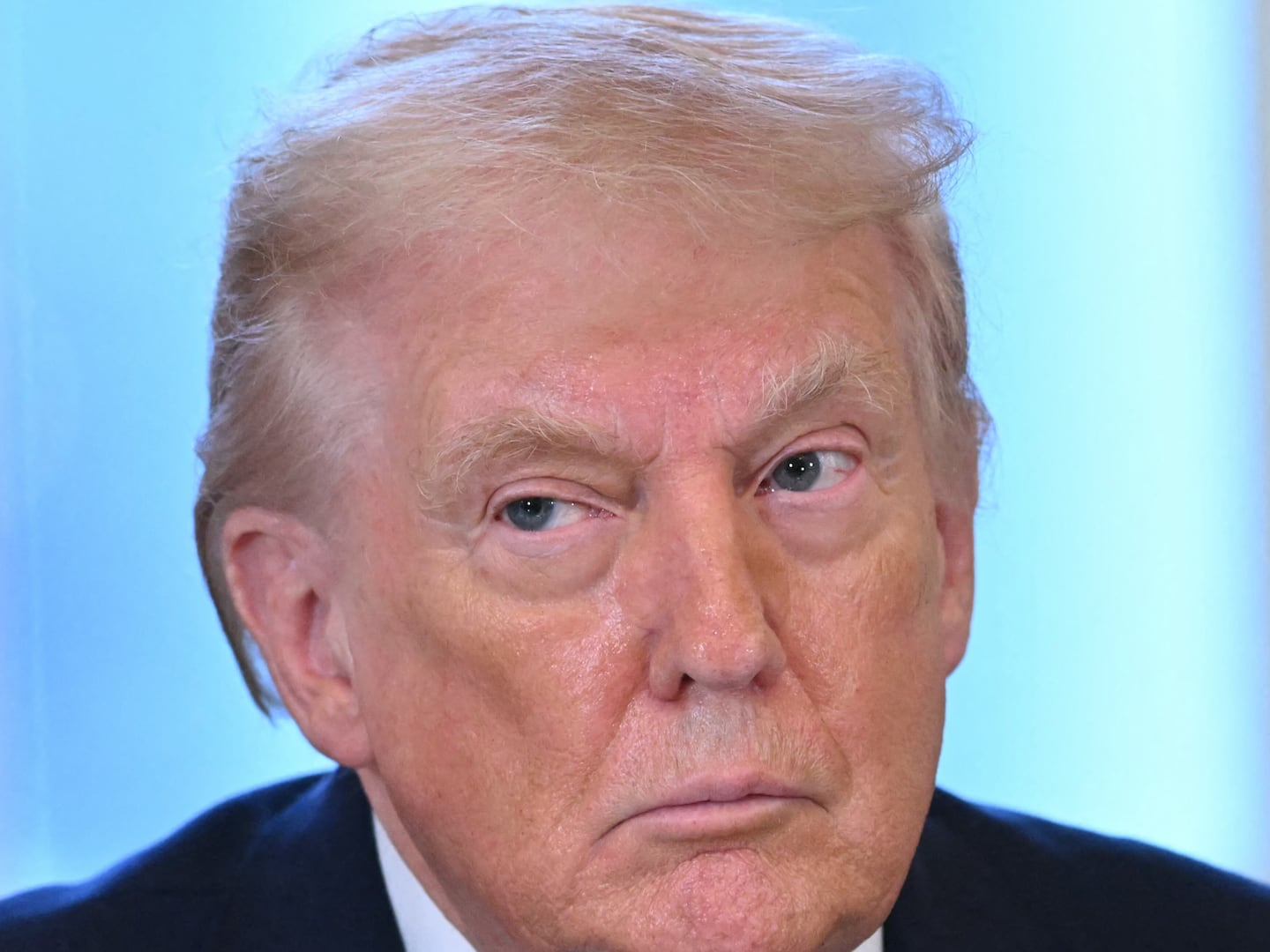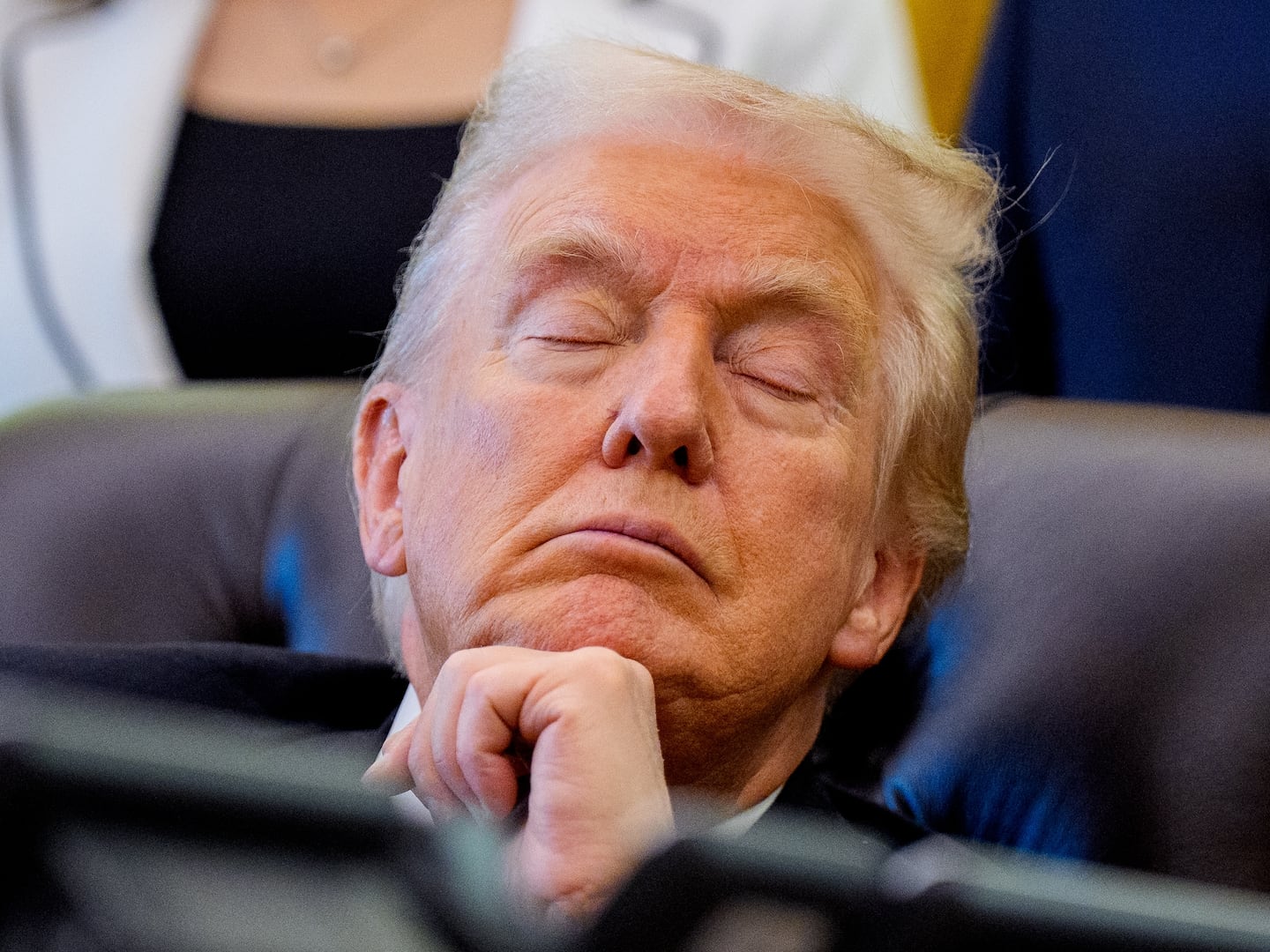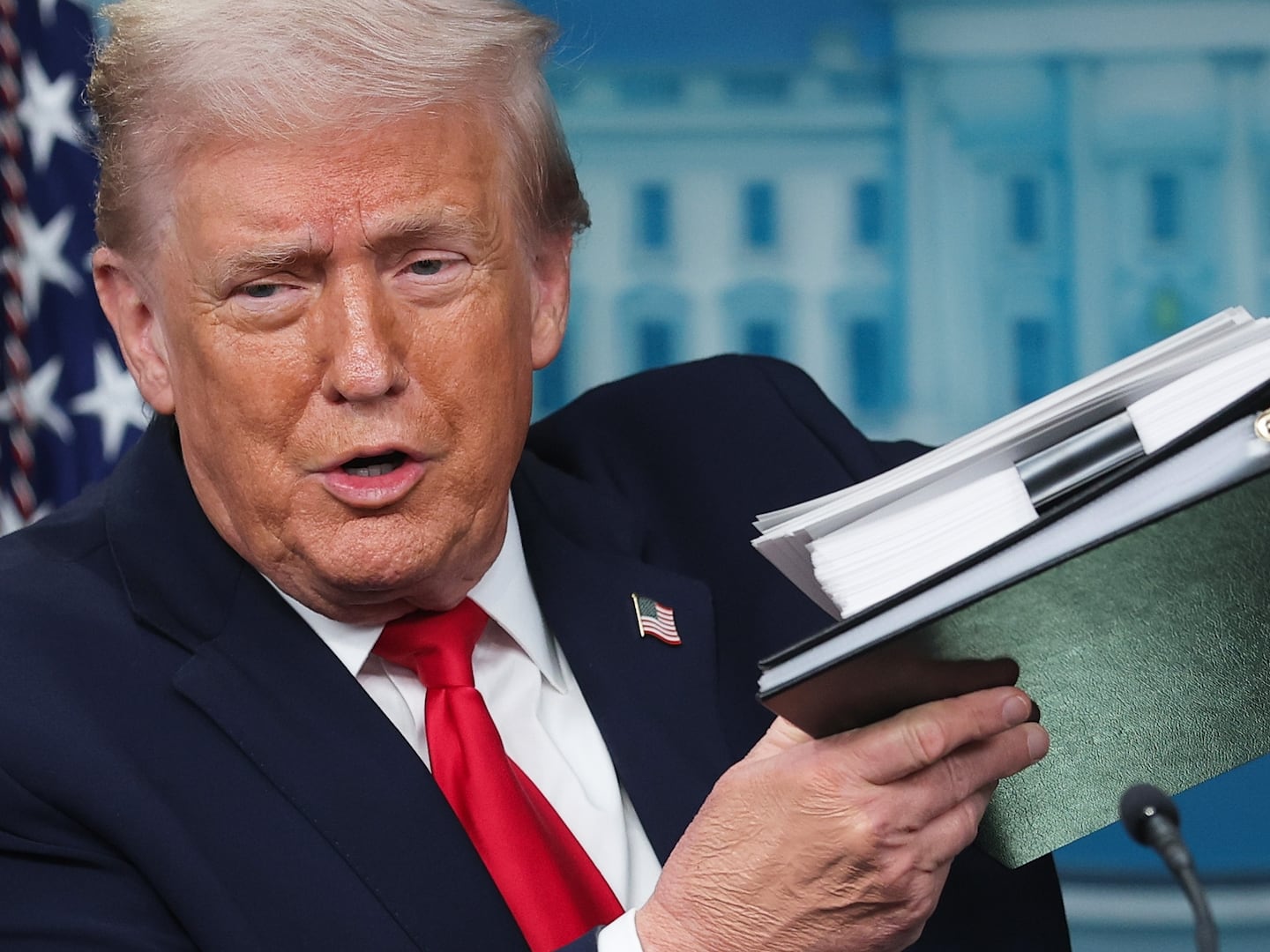Something remarkable happened on Tuesday night: CNN’s Jake Tapper grilled Roy Moore spokesman Ted Crockett about the candidate’s comments on LGBT issues.
Tapper refused to let Crockett dodge the question of whether or not the former Alabama chief justice and accused child molester still believes that “homosexual conduct should be illegal,” as Moore said verbatim in 2005. Crockett tried to wiggle out of answering.
“It’s a ‘yes’ or ‘no’ question,” Tapper had to remind him.
“Probably,” Crockett eventually responded—and the damning headlines followed.
It was gratifying to see Crockett so expertly backed into a corner. But since then, the exchange has left me wondering why I haven’t seen more elected officials and political candidates pressed just as hard—and just as memorably—on their own anti-LGBT statements and stances. Indeed, mainstream media outlets are often reluctant to treat anti-LGBT extremists as such.
Vice President Mike Pence, after all, once proposed redirecting money from an HIV/AIDS program to “institutions which provide assistance to those seeking to change their sexual behavior”—a statement widely interpreted as an endorsement of the discredited and dangerous practice of anti-gay “conversion therapy,” although a spokesman tried to claim otherwise during the campaign.
During his long political career, Pence has also implied that being gay is a choice and signed a wildly unpopular anti-LGBT “religious freedom” bill in Indiana that elicited national outrage.
But during last year’s vice presidential debate—as Quartz and others noted—moderator Elaine Quijano of CBS asked him zero questions about LGBT issues. The acronym “LGBT” was spoken only once, by former vice presidential candidate Tim Kaine, in response to a question about Russia.
So, what happened with Roy Moore that he got the ninth degree while Mike Pence got off scot-free?
For one, there was an immediate emotional hook in the Moore campaign’s eleventh hour: the story of Nathan Mathis, the 74-year-old Alabama man who went viral after he held a sign outside of a Roy Moore event reading, “Judge Roy Moore called my daughter Patti Sue Mathis a pervert because she was gay. A 32-year-old Roy Moore dated teenage girls aged 14 to 17.”
Mathis’ personal story caught on like wildfire—a story he told in moving detail in an exclusive interview with The Daily Beast’s Tim Teeman—and helped drag Moore’s anti-gay attitudes into the spotlight.
Secondly, Moore was a candidate whose statements on subjects ranging from Islam to President Obama’s birthplace were so patently outrageous that pressing him on his “homosexual conduct” comments would serve to further illustrate his extremism.
At a time when he seemed to have a good chance of winning a U.S. Senate race despite accusations of child sexual molestation, it probably seemed important to decent folks to see if anything—like him possibly wanting to criminalize homosexuality—would stick.
Even then, the brilliant Tapper moment felt last-minute: CNN’s digital politics reporting team resurfaced Roy Moore’s “homosexual conduct should be illegal” comment on Sept. 22. No one really hounded the campaign about that comment persistently enough to get a striking answer until Tapper did it on election night: Dec. 12.
Determining how vehemently a political candidate opposes LGBT people should be a priority, not an afterthought.
Given that an estimated 10 million Americans now identify as LGBT— including 7.3 percent of people born between 1980 and 1998—it’s important for the public to know whether or not people in positions of power want to strip away their rights before election night.
But far too often, when it comes to interrogating your average, run-of-the-mill politician about an anti-LGBT track record, mainstream media outlets fail spectacularly and delay too long.
There were plenty of early warning signs, for instance, that Trump himself would be no staunch LGBT ally, despite the prevailing narrative that he was personally sympathetic to the LGBT crowd—a narrative that even seemed to persuade some LGBT voters, as The Daily Beast’s Jay Michaelson noted.
Trump himself went after Rosie O’Donnell in a way that seemed at least laced with homophobia, he made a bizarre joke about the name of a transgender beauty pageant contestant, and he had a particularly bad reaction to gay football player Michael Sam kissing on his TV screen.
While none of that is as extreme as saying that “homosexual conduct should be illegal,” his campaign certainly embraced anti-LGBT evangelical leaders who have said far more inflammatory things.
To give just one example, as Mother Jones noted, Trump spoke at a conference in August 2016 hosted by a group whose founder once wrote that “Hollywood’s cultural Marxists” are trying to “normalize” homosexuality by putting it on TV as a form of “psychological conditioning.”
But you’d be hard-pressed to find a single moment of the campaign when Trump was interrogated on LGBT issues with anywhere near the level of dedication as the Tapper/Crockett exchange.
Instead, LGBT issues did not get brought up in the presidential debates, except for some brief asides in the last one.
And then finally, after the election, as if waking up from a deep slumber, outlets like The New York Times which once ran a news article headlined “Donald Trump’s More Accepting Views on Gay Issues Set Him Apart in G.O.P.” reported that a “Trump Victory Alarms Gay And Transgender Groups.”
Of course it did. LGBT people had only been saying that for months.
Part of the problem here almost certainly has something to do with what NYU journalism professor Jay Rosen and other media critics have repeatedly criticized as “both sides” reporting—and the behind-the-scenes choices that go into making it.
As Rosen wrote in 2009—citing a model constructed by communications scholar Daniel C. Hallin—some topics that get discussed in ostensibly “objective” journalism are seen as deviant, some are seen as up for debate, and others reside in a “sphere of consensus” or widespread agreement.
For instance: Moore’s alleged behavior is pretty uniformly presented as deviant because there is a strong media consensus—as there should be—that child sexual abuse is a grave moral wrong, although that didn’t seem to deter the 48 percent of Alabama voters who checked the box for Moore anyway.
Rosen’s point was that journalists—especially those that aspire to some kind of imaginary neutrality or objectivity—implicitly sort everything they cover into these categories, whether they think they’re doing it or not.
“That journalists affirm and enforce the sphere of consensus, consign ideas and actors to the sphere of deviance, and decide when the shift is made from one to another—none of this is in their official job description,” Rosen noted, but maintained that it is indeed “an intrinsic part of what they do,” even if they claim to be apolitical.
And when journalists decide that an idea is neither deviant nor agreed-upon, but rather up for debate, the television coverage inevitably becomes lazy: Producers book one talking head who takes one side, book another talking head who takes the other side, and then let them yell at each other for a few minutes. “Both sides” get air time but that’s about it. People might be entertained but the public isn’t really served by it.
When it comes to LGBT issues, that sorting process into the realms of deviance, debate, and consensus gets really tricky for “objective” newspapers and television programs.
Right now, some pieces of full LGBT equality—the bare minimum, I would say—are being treated as matters of consensus, while the rest are being shipped off to the land of debate: “both sides” territory.
To apply this to the Moore campaign, consider that, according to Gallup, 72 percent of American adults currently believe that consensual same-sex sexual activity should be legal. That gives someone like Jake Tapper and other mainstream newsmakers pretty wide berth to present Moore’s comment that “homosexual conduct should be illegal” as a transparently bad point of view.
But when it comes to transgender rights—an area where Americans are much more divided—mainstream journalists feel less pressure to present “one side” as correct.
So there’s a reason why Tapper would choose to push Crockett on the “homosexual conduct should be illegal” comment and not one of the many negative remarks Moore made about transgender people, like that they “don’t have rights.” The legality of “homosexual conduct,” Tapper is implicitly saying, is no longer up for debate.
But given that 72 percent is about as high as most forms of public support for LGBT equality go—support for same-sex marriage is only at 64 percent—that means we won’t see courageous reporting like Tapper’s on the vast majority of LGBT issues for an unfortunately long time.
If you think a journalist’s job is to watch public opinion polls and decide when to present something as consensus and when to turn it into a “both sides” spectacle, you won’t mind the wait.
But if you think there’s a journalistic mission to do deep analysis, to tell the truth, and to respect the humanity of the marginalized, you’re probably like me: Miffed that it takes someone like Roy Moore to get the media to really go after homophobia hard—because the truth, when it comes to LGBT issues, is firmly on the LGBT side.
To use transgender people as an example, virtually all medical associations support transgender identity as real and valid. (The American Medical Association, in fact, even condemned “bathroom bills.”)
So even if public opinion on the subject is divided, there is widespread scientific consensus that transgender people are real, that their health care is medically necessary, and that they should be protected from harm. Ditto with gay, lesbian, and bisexual people—and yes, that still needs saying.
Mainstream journalists don’t need to present the humanity of LGBT people as being up for debate. We could skip right to the part where the anti-LGBT fringe is treated as such—and where a president having them over to the White House is cause for constant and intense interrogation, Tapper-style.
But we won’t skip there—because doing so would mean taking a stand, admitting that journalistic “objectivity” is fraught, and, yes, picking a “side.” Skipping there would mean risking accusations of “liberal media bias” or activism.
Instead, the mainstream press will continue to watch the barometer of public opinion until, years from now, it will be safe to grill candidates on their past statements on transgender people—or their more mildly hateful stances on LGBT equality—with the same ferocity that Tapper tore into Crockett this past Tuesday evening.
What happened that night was indeed remarkable—because it shouldn’t have been remarkable, but commonplace.






